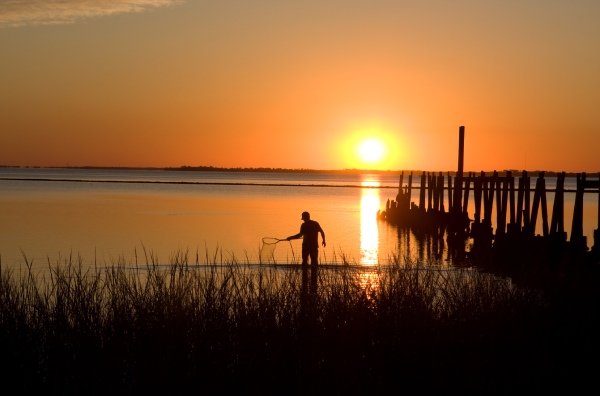News Update
Panacea, Apalachee Bay Still Stuck Wonderfully in Time Past
Capt. SANDY BOTTOMS
Certified Captain
We sat on my tailgate, peeling Satsuma oranges Sara brought from a neighbor’s tree, watching the dark waters roll by in the morning mist.
“I can’t see across the river it’s so foggy,” I told my good friend, who made the jump from Tallahassee to meet me at a boat ramp on the St. Marks River. “Good thing we’re going with a guide who knows this place.”

Soon we were idling downstream to the Gulf, dodging crab traps while diver ducks zoomed by in the fog. Capt. Tanner stuck us next to an oyster bar where we pitched live shrimp on jigheads to hungry black drum and reds for an hour.
It was “should’ve been here yesterday” for seatrout, but no complaints from our group. The collection of 3-pound black drum in a slurry of ice looked like a fine future of fish tacos.
The Apalachee Bay region — right in the armpit of the Big Bend — is wonderfully stuck in a time past. Seafood markets with fading, hand-painted signs dot the highway into the small town of Panacea. No-frills motels offer a cheap sleep for the wandering angler. White rubber boots still are in high fashion.
A drive-through St. Marks National Wildlife Refuge speaks to the soul of the ecologically-enlightened angler, revealing the complex system driving such a productive nearshore fishery. Old growth pine forests butt right up to the edge of breathtaking marsh vistas as far as the eye can see. Fiddler crabs, thousands upon thousands, cross dirt roads and flip you the claw. Giant striped mullet, like salmon in reverse, flee the tidal creeks as winter bites, heading offshore to cast their spawn.
Tides connect it all. Redfish can start their morning in crystal-clear Gulf of Mexico water, then be miles up a freshwater creek by noon chasing killifish beneath the pines in a 3-foot wide ditch. The incoming water covers the bare, black mud of those endless marshy ditches, then nourishes the Gulf with nutrients and forage as it departs.
Mullet are a big deal up here. Big numbers populate the brackish creeks and bays. Mullet festivals are a thing. Smoked mullet dip is advertised at nearly every market. A leaping mullet — the region’s charismatic symbol of commercial fishing.
They are truly a force of nature. Mostly herbivorous, mullet deliver one of the shortest links from the sun’s energy to larger marine predators. They carry the marsh to the sea.
Cast netting is most productive, but one hasn’t truly lived until hook-and-lining a 3-pound striped mullet on light tackle. A niche fishery if there ever was one, locals visit certain tidal creeks and culverts during incoming tide. Their secret rig? Small pieces of fresh worm pinned to a small hook a foot below a cork. Keep the mono 6-pound test or less to fool their cautious eyes.
To the snobbish and ignorant, they’re a muddy baitfish. Yet, to the wise and cultured, they’re a delightful blessing. Their flesh so flavorful, nary a speck shall be wasted — even the backbones are served fried at local diners. Butterflied and roasted outdoors over a woodfire, the fatty layer under the skin melts into the flesh, giving the taster a buttery mouthfeel akin to Copper River king salmon. Add a couple good friends to that campfire beneath the oaks and you’ll want to keep Apalachee Bay a secret, too.
To experience Big Bend fishing at its finest with a third-generation north Florida native fisherman, contact Captain Tanner Plouffe of Panacea Outfitters at 850-778-6769.

